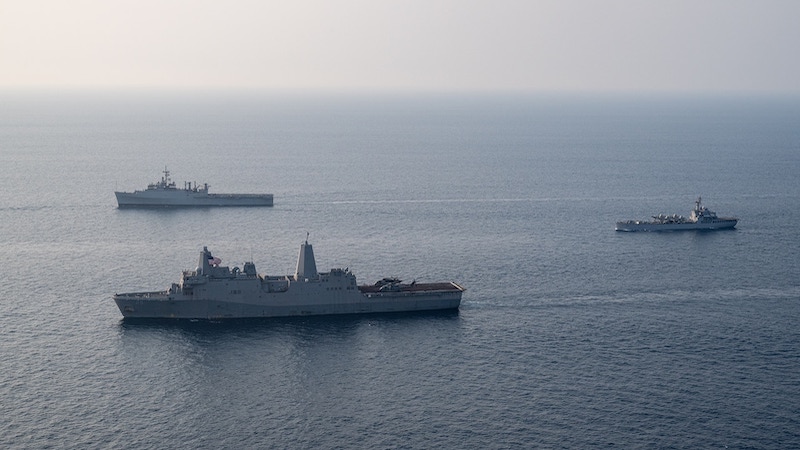Navigating Turbulence: India-China Rivalry Heats Up In The Indian Ocean – OpEd

As the shadow of the 2020 Ladakh crisis looms large, the India-China rivalry has shifted from the towering Himalayas to the vast expanse of the Indian Ocean. In a strategic game of cat and mouse, both nations are extending their spheres of influence, creating a new theatre of competition with profound implications for regional and global stability. This analysis delves into the military manoeuvres, strategic partnerships, and geopolitical calculations driving this escalating maritime contest, as India and China vie for dominance in the Indo-Pacific region.
The India-China rivalry in the Indian Ocean Region is more than a maritime contest; it’s a strategic showdown with far-reaching consequences. China's ambitions, driven by economic imperatives and geopolitical strategies, are countered by India's robust maritime strategy and regional alliances. The power balance in the IOR will significantly influence broader Indo-Pacific dynamics, making it imperative for regional actors to navigate this complex landscape with strategic foresight and diplomatic finesse.
Indian Ocean Region in China’s Calculus
China’s engagement in the Indian Ocean Region (IOR) is driven by its economic imperatives, seeking to capitalize on the trade prospects and demographic vibrancy of the region. The Belt and Road Initiative (BRI) is central to this strategy, aiming to extend China’s geoeconomic and geopolitical presence beyond the South China Sea. With the land Belt component hindered by security challenges and disputed borders, the maritime Road has become crucial for trade, leveraging the open seas.
China's approach in the IOR involves dual-use assets such as submarines and research vessels, ostensibly for protecting trade routes but raising suspicions about surveillance purposes. The COVID-19 pandemic intensified this dynamic, as global inward focus created a vacuum that China moved to fill, further extending its influence.
China's Strategic Moves
China has made significant inroads into the IOR through various means. Strategically, it has enhanced its dual-use port presence and infrastructure in nations like Cambodia, Myanmar, and the Maldives. Militarily, China boasts a fleet exceeding 370 vessels, surpassing even the United States. Its partnership with Pakistan, exemplified by the provision of advanced submarines, intensifies the regional arms race and stirs strategic debates within India.
Chinese fishing fleets and research vessels are also employed strategically, collecting sensitive data under the guise of economic activity. Incidents of Chinese vessels operating near India's exclusive economic zone (EEZ) have raised alarms about illegal, unreported, and unregulated (IUU) fishing and potential security threats. The presence of Chinese hydrographic survey and satellite tracking vessels further fuels concerns about military data collection and surveillance.
India’s Maritime Vision and Response
In response, India has developed a robust maritime strategy to secure its interests in the IOR. The Indian Navy's mission-based deployments ensure constant presence at crucial entry points, demonstrating India's capability to act as the region's first responder. Establishing new bases in strategic locations like the Lakshadweep islands and Mauritius extends India's operational reach.
India has also intensified defense cooperation with regional countries, posting defense attachés in several Asian and African nations and enhancing naval exercises with partners like the United States, France, and Australia. These initiatives aim to uphold a rules-based maritime order, ensuring freedom of navigation and secure trade lines.
Moreover, India's indigenous defense program has gained regional trust, with countries like the Philippines purchasing India's BrahMos supersonic cruise missile. India's support for regional sovereignty and multilateral engagement, as seen in the Indian Ocean Rim Association and the Quad, contrasts with China's unilateral actions and disregard for international law.
Future Contestation
Sino-Indian tensions now transcend territorial disputes, encompassing broader regional dynamics as China seeks dominance and rejects a multipolar Asia. The Indian Ocean has become a critical arena for this rivalry, with China’s increased naval presence heightening the risk of maritime face-offs. India's vision aligns with regional aspirations for a rules-based order, but China's assertiveness, reminiscent of its South China Sea behavior, threatens to destabilize the region.
As New Delhi and its partners brace for a more contested maritime environment, the strategic stakes in the Indian Ocean will shape the future of Indo-Pacific security and influence. The unfolding competition underscores the need for vigilant, coordinated responses to preserve regional stability and uphold international norms.
In Sum
The India-China rivalry in the Indian Ocean Region is not just about maritime dominance; it's a strategic contest with far-reaching implications. China's ambitions, fuelled by economic imperatives and strategic calculations, are met by India's robust maritime strategy and regional partnerships. The balance of power in the IOR will significantly influence the broader Indo-Pacific dynamics, making it essential for regional actors to navigate this turbulence with strategic foresight and diplomatic agility.
